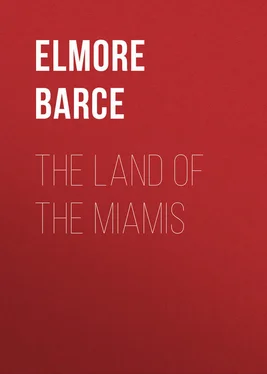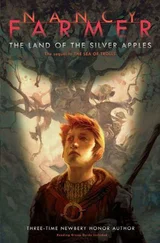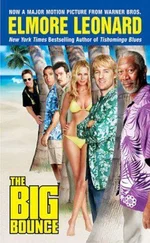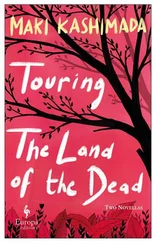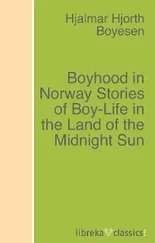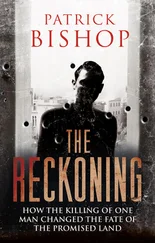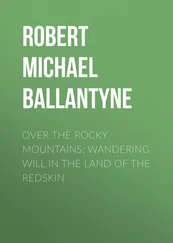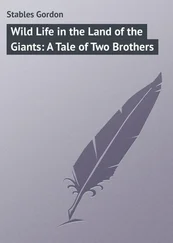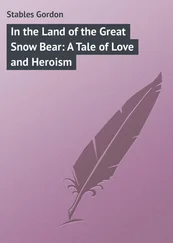Elmore Barce - The Land of the Miamis
Здесь есть возможность читать онлайн «Elmore Barce - The Land of the Miamis» — ознакомительный отрывок электронной книги совершенно бесплатно, а после прочтения отрывка купить полную версию. В некоторых случаях можно слушать аудио, скачать через торрент в формате fb2 и присутствует краткое содержание. ISBN: , Жанр: foreign_antique, foreign_prose, Историческая проза, на английском языке. Описание произведения, (предисловие) а так же отзывы посетителей доступны на портале библиотеки ЛибКат.
- Название:The Land of the Miamis
- Автор:
- Жанр:
- Год:неизвестен
- ISBN:http://www.gutenberg.org/ebooks/30244
- Рейтинг книги:4 / 5. Голосов: 1
-
Избранное:Добавить в избранное
- Отзывы:
-
Ваша оценка:
- 80
- 1
- 2
- 3
- 4
- 5
The Land of the Miamis: краткое содержание, описание и аннотация
Предлагаем к чтению аннотацию, описание, краткое содержание или предисловие (зависит от того, что написал сам автор книги «The Land of the Miamis»). Если вы не нашли необходимую информацию о книге — напишите в комментариях, мы постараемся отыскать её.
The Land of the Miamis — читать онлайн ознакомительный отрывок
Ниже представлен текст книги, разбитый по страницам. Система сохранения места последней прочитанной страницы, позволяет с удобством читать онлайн бесплатно книгу «The Land of the Miamis», без необходимости каждый раз заново искать на чём Вы остановились. Поставьте закладку, и сможете в любой момент перейти на страницу, на которой закончили чтение.
Интервал:
Закладка:
The economical value of the herds of buffalo to the Indian tribes of the northwest may be gathered from the uses to which they were afterwards put by the tribes of the western plains. "The body of the buffalo yielded fresh meat, of which thousands of tons were consumed; dried meat, prepared in summer for winter use; pemmican (also prepared in summer) of meat, fat and berries; tallow, made up into large balls or sacks, and kept in store; marrow, preserved in bladders; and tongues, dried and smoked, and eaten as a delicacy. The skin of the buffalo yielded a robe, dressed with the hair on, for clothing and bedding; a hide, dressed without the hair, which made a tepee cover, when a number were sewn together; boats, when sewn together in a green state, over a wooden frame work; shields, from the thickest portions, as rawhide; clothing of many kinds; bags for use in traveling; coffins, or winding sheets for the dead, etc. Other portions utilized were sinews, which furnished fibre for ropes, thread, bowstrings, snow shoe webs, etc.; hair, which was sometimes made into belts and ornaments; "buffalo chips," which formed a valuable and highly prized fuel; bones, from which many articles of use and ornament were made; horns, which were made into spoons, drinking vessels, etc." The Rev. John Heckewelder, in speaking of the skill of the Delawares of Ohio, in dressing and curing buffalo hides, in the latter part of the eighteenth century, says that they cured them so that they became quite soft and supple, and so that they would last for many years without wearing out.
All at once, and near the beginning of the last decade of the eighteenth century, the buffalo herds east of the Mississippi, suddenly disappeared. George Wilson, in his history of Dubois County, Indiana, says that, "toward the close of the eighteenth century a very cold winter, continuing several months, froze all vegetable growth, starved the noble animals, and the herds never regained their loss." This statement is borne out by the testimony of the famous Potawatomi chieftain Shaubena, of northern Illinois, who says that the trade in buffalo robes east of the Mississippi ceased in about the year 1790; that when a youth he joined in the chase of buffalos on the prairies, but while he was still young, they all disappeared from the country. "A big snow, about five feet deep, fell, and froze so hard on the top that people walked on it, causing the buffalo to perish by starvation. Next spring a few buffalo, poor and haggard in appearance, were seen going westward, and as they approached the carcasses of dead ones, lying here and there on the prairies, they would stop, commence pawing and lowing, then start off again in a lope for the west." It is true that Brigadier-General Josiah Harmar, in marching from Vincennes to Kaskaskia, in 1787, gives a striking account of the early prairies, "like the ocean, as far as the eye can see, the view terminated by the horizon," and describes the country as excellent for grazing, and abounding with deer and buffalo. Pachan, or Pecan, a famous Miami chieftain from Miamitown, and an Indian comrade, supplied the military party with buffalo and deer meat on the march out, and on the return. Notwithstanding these facts, the story of the terrible winter and the deep snow as told by Shaubena seems authentic, and while scattered remnants of the great herds may still have existed for some time afterward, the great droves stretching "for above a league together," were seen no more.
The great snowfall was the culminating tragedy. In order to secure whiskey and brandy the horse tribes of the prairies had slaughtered thousands, and bartered away their robes and hides. What distinguishes the savage from civilized man is, that the savage takes no heed of the morrow. To satisfy his present passions and appetites he will sacrifice every hope of the future. He no longer cures the skins and clothes his nakedness. He thinks no longer of husbanding his supply of meat and game. He robs the plain, and despoils every stream and river, and then becomes a drunken beggar in the frontier towns, crying for alms. The same thing that happened on the plains of Illinois at the close of eighteenth, took place on the plains west of the Mississippi in the last half of the nineteenth century. The giant herds melted away before the remorseless killings of the still hunters and savages, who threw away a meat supply worth millions of dollars in a mad chase for gain and plunder, and no one took a more prominent part in that killing than the Indian himself.
"When the snow fall was unusually heavy," says William T. Hornaday, "and lay for a long time on the ground, the buffalos fast for days together, and sometimes even weeks. If a warm day came, and thawed the upper surface of the snow, sufficiently for succeeding cold to freeze it into a crust, the outlook for the bison began to be serious. A man can travel over a crust through which the hoofs of a ponderous bison cut like chisels and leave him floundering belly-deep. It was at such times that the Indians hunted him on snow-shoes, and drove their spears into his vitals as he wallowed helplessly in the drifts. Then the wolves grew fat upon the victims which they, also, slaughtered without effort." This is probably an accurate description of what took place east of the Mississippi river about the year 1790, and left the bones of the herds to bleach on the prairies.
However the facts may be, it is certain that at the opening of the nineteenth century the buffalo were practically extinguished in the territory of the northwest. A few scattered animals may have remained here and there upon the prairies, but the old herds, whose progenitors were seen by Croghan were forever gone. In the month of December, 1799, Judge Jacob Burnet was traveling overland on horseback from Cincinnati to Vincennes on professional business, and while at some point north and west of the falls of the Ohio, he and his companions surprised a small herd of eight or ten buffalos, that were seeking shelter behind the top of a fallen beech tree on the line of an old "trace," during a snow storm. This is one of the last accounts given of any buffalos in Indiana. On August 18th and August 27th, 1804, Governor William Henry Harrison, as Indian agent for the United States government, bought a large tract of land in southern Indiana, between the Wabash and the Ohio rivers, from the Delaware and Piankeshaw tribes. The right to make this purchase was disputed by Captain William Wells, the Indian agent at Fort Wayne, and by the Little Turtle, claiming to represent the Miamis, and it was claimed among other things, that the lands bought were frequented as a hunting ground by both the Miamis and Potawatomi, and that they went there to hunt buffalo. The truth of this statement was denied by Governor Harrison, who said that not an animal of that kind "had been seen within that tract for several years."
Traces of the old buffalo wallows are occasionally met with, even to this day. The great animals "rolled successively in the same hole, and each carried away a coat of mud," which, baking in the sun, served to protect them against the great swarm of flies, gnats and insects that infested the marshes and prairies of that early time. One of these wallows, in a perfect state of preservation, exists in the northwest quarter of section thirty, in township twenty-five north, range six west, in Benton County, Indiana. It is several yards in diameter, hollowed out to a depth of four or five feet, and its periphery is almost an exact circle. It is situated on a rather high, springy knoll, commanding a view of the surrounding plain for several miles. A great number of Indian arrow heads have been picked up in the immediate vicinity, showing that the Indiana had previously resorted thither in search of game.
CHAPTER V
THE WABASH AND THE MAUMEE
– Chief line of communication with the tribes of the Early Northwest. The heart of the Miami Country.
Читать дальшеИнтервал:
Закладка:
Похожие книги на «The Land of the Miamis»
Представляем Вашему вниманию похожие книги на «The Land of the Miamis» списком для выбора. Мы отобрали схожую по названию и смыслу литературу в надежде предоставить читателям больше вариантов отыскать новые, интересные, ещё непрочитанные произведения.
Обсуждение, отзывы о книге «The Land of the Miamis» и просто собственные мнения читателей. Оставьте ваши комментарии, напишите, что Вы думаете о произведении, его смысле или главных героях. Укажите что конкретно понравилось, а что нет, и почему Вы так считаете.
